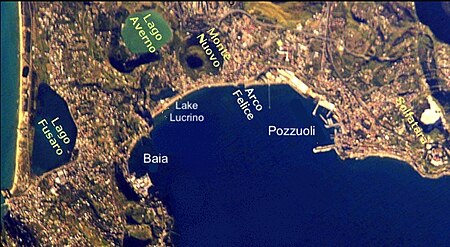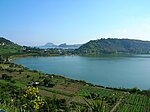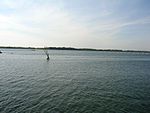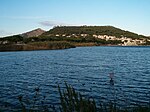Battle of Mount Gaurus
340s BC conflicts343 BC4th century BC in the Roman RepublicBattles involving the Roman RepublicBattles of the Samnite Wars

The Battle of Mount Gaurus, 343 BC, was the first battle of the First Samnite War and also the first battle fought between the Roman Republic and the Samnites. The battle is described by the Roman historian Livy (59 BC – AD 17) as part of Book Seven of his history of Rome, Ab Urbe Condita Libri, where he narrates how the Roman consul Marcus Valerius Corvus won a hard-fought battle against the Samnites at Mount Gaurus, near Cumae, in Campania. Modern historians however believe that most, if not all, of the detail in Livy's description has been invented by him or his sources.
Excerpt from the Wikipedia article Battle of Mount Gaurus (License: CC BY-SA 3.0, Authors, Images).Battle of Mount Gaurus
Via delle Colmate,
Geographical coordinates (GPS) Address Nearby Places Show on map
Geographical coordinates (GPS)
| Latitude | Longitude |
|---|---|
| N 40.848611111111 ° | E 14.053611111111 ° |
Address
Parco archeologico di Cuma
Via delle Colmate
80072
Campania, Italy
Open on Google Maps










